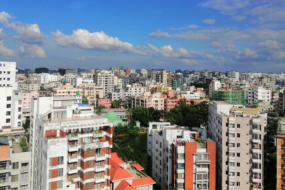The recent cabinet approval for the development of 12 new industrial smart cities marks a transformative moment in the country’s industrial and real estate sectors. With an ambitious investment of ₹28,602 crore, this initiative is set to revolutionize how industrial and commercial spaces are conceived, developed, and utilized.
As a professional deeply involved in the real estate industry, I find this development not just significant but pivotal for the future of urban and industrial planning in India. Here’s a detailed exploration of how these new industrial parks will reshape the landscape of both sectors.
A Vision for Integrated Development
The National Industrial Corridor Development Programme (NICDP) is spearheading this monumental project, which promises to infuse ₹1.5 lakh crore into the economy and generate approximately 4 million direct and indirect jobs. This expansive vision encompasses 12 strategically located smart cities across 10 states, including major regions like Maharashtra, Uttar Pradesh, and Telangana. The project’s scale and ambition are evident in its design and goals, which focus on creating industrial hubs with a modern approach to urban planning.
The “Plug-and-Play” Advantage
One of the most compelling features of these new industrial parks is the “plug-and-play” infrastructure model. This concept aims to streamline business operations by providing ready-to-use industrial plots equipped with essential utilities and connectivity. This approach will significantly reduce the time and effort required for businesses to establish themselves, thus attracting a diverse range of investors—from large multinational corporations to innovative startups.
The efficiency and convenience of this setup are expected to catalyze rapid industrial growth. By minimizing bureaucratic hurdles and offering a seamless integration of infrastructure, these parks are poised to become highly sought-after locations for industrial activities. The focus on immediate operational readiness will appeal to businesses looking for efficient, cost-effective solutions for their expansion needs.
Walk-to-Work: Redefining Urban Living
In addition to industrial development, the smart cities will incorporate the “walk-to-work” concept, emphasizing the integration of residential and commercial spaces. This innovative approach aims to enhance the quality of life by reducing commute times and promoting a balanced lifestyle. The inclusion of residential areas in proximity to workplaces will not only improve the convenience for employees but also foster a more sustainable urban environment.
This integration is likely to stimulate demand for commercial real estate in these smart cities. Businesses will seek spaces that align with the modern, efficient, and eco-friendly ethos of the new urban environments. Retail, hospitality, and service industries will benefit from the influx of residents and the increased economic activity generated by the industrial parks.
Economic and Employment Impact
The economic implications of this initiative are profound. The creation of 4 million jobs will have a ripple effect across various sectors, driving demand for both industrial and commercial real estate. The new industrial cities will serve as economic powerhouses, attracting investments and fostering growth in related industries.
Moreover, the project’s alignment with India’s broader economic goals—such as achieving USD two trillion in exports by 2030—highlights its strategic importance. By positioning India as a key player in global value chains, the industrial parks will contribute to the country’s economic resilience and competitiveness on the global stage.
Sustainability at the Core
Sustainability is a core principle of the NICDP, and the development of these smart cities reflects this commitment. The incorporation of green technologies and ICT-enabled utilities aims to minimize environmental impact while promoting efficient industrial operations. The focus on creating environmentally responsible industrial hubs will set a new standard for sustainable development in India.
The emphasis on green infrastructure aligns with global trends towards eco-friendly urban planning. As these smart cities become models of environmental stewardship, they will attract like-minded businesses and investors, further enhancing their appeal and sustainability.
Strategic Regional Development
The strategic location of these industrial parks across 10 states ensures a balanced regional development. By focusing on diverse geographical areas, the project aims to address regional disparities and promote economic growth across the country. States such as Maharashtra, Punjab, and Kerala will experience significant economic boost, contributing to the overall development of the nation.
The distribution of industrial parks along six major corridors will enhance connectivity and facilitate the efficient movement of goods and services. This integrated approach will strengthen regional economies and foster a more interconnected industrial network.
Looking Ahead
These 12 industrial smart cities mark a new chapter in India’s industrial and real estate sectors. As we look to the future, the impact of this initiative will be far-reaching, influencing everything from business operations to urban lifestyles. The project’s focus on efficiency, sustainability, and integrated development will set new benchmarks for industrial and commercial real estate.
For stakeholders across the real estate spectrum—investors, developers, and policymakers—the development of these smart cities represents an opportunity to engage with and contribute to a transformative national project. The collaborative efforts to realize this vision will shape the future of India’s industrial landscape and drive the nation’s growth for years to come.
In conclusion, the Cabinet’s approval of these 12 industrial parks is not merely a policy decision but a strategic move towards creating a more dynamic, efficient, and sustainable industrial ecosystem. The implications for the real estate sector are profound, and the potential for growth and innovation is immense. As we embark on this journey, it is essential to embrace the opportunities and challenges that lie ahead and work together to build a thriving industrial and commercial landscape.




